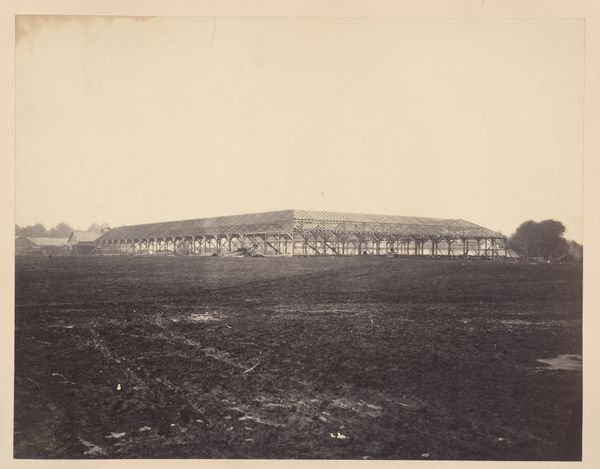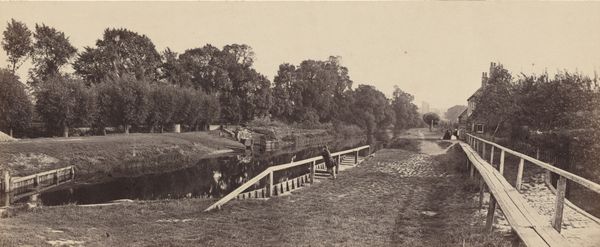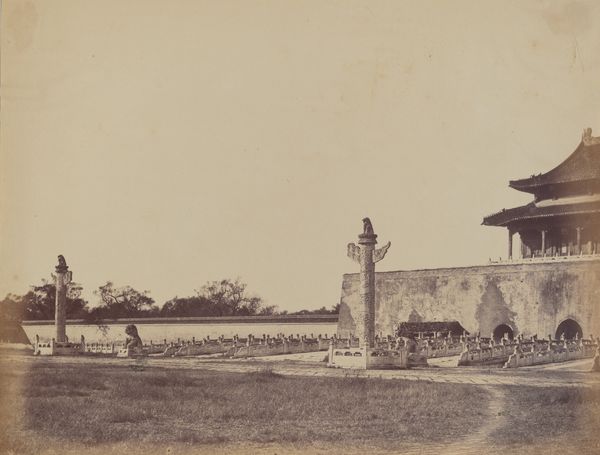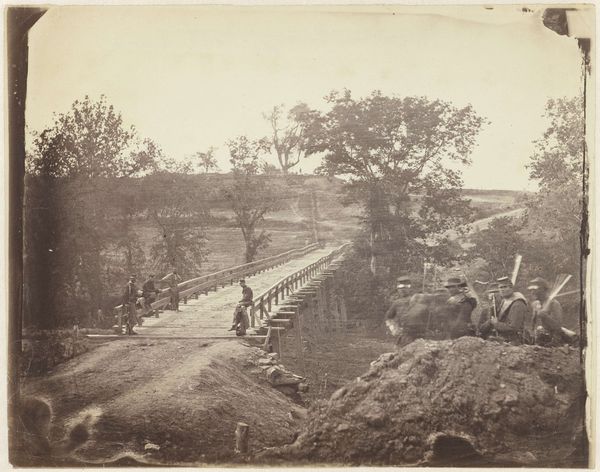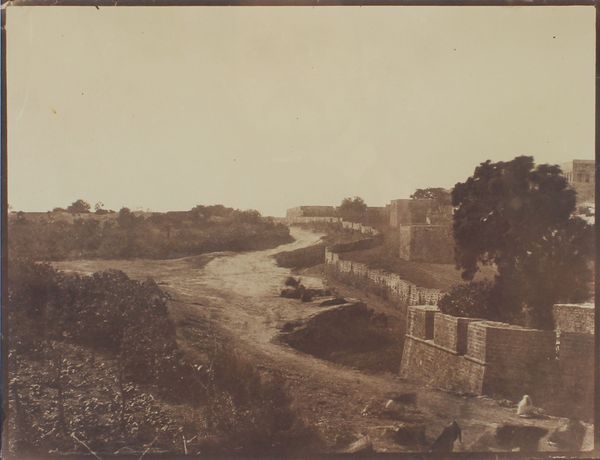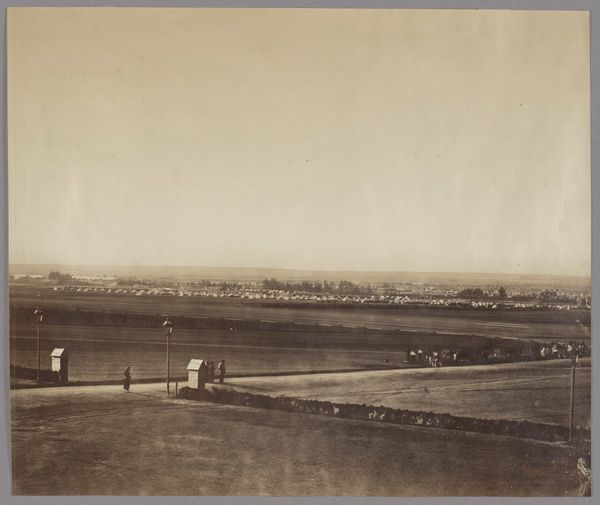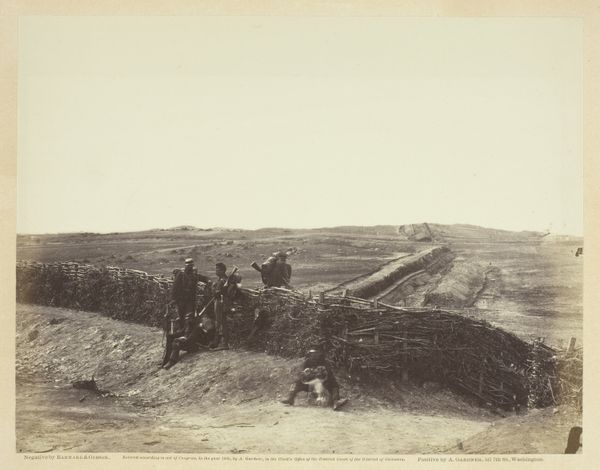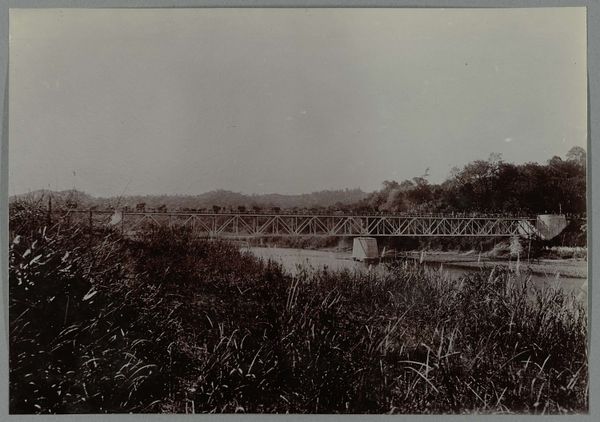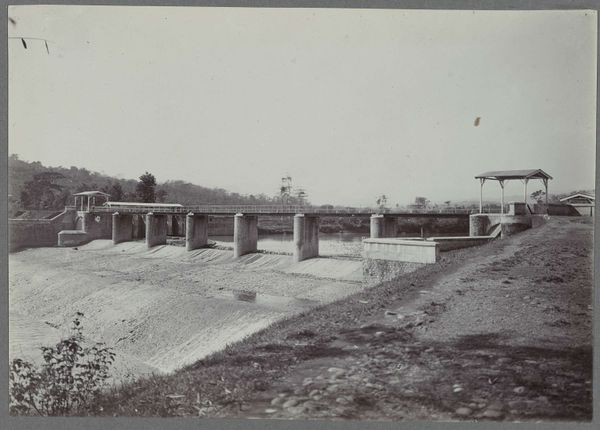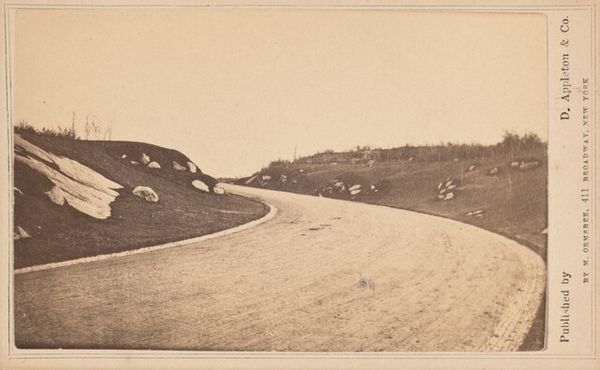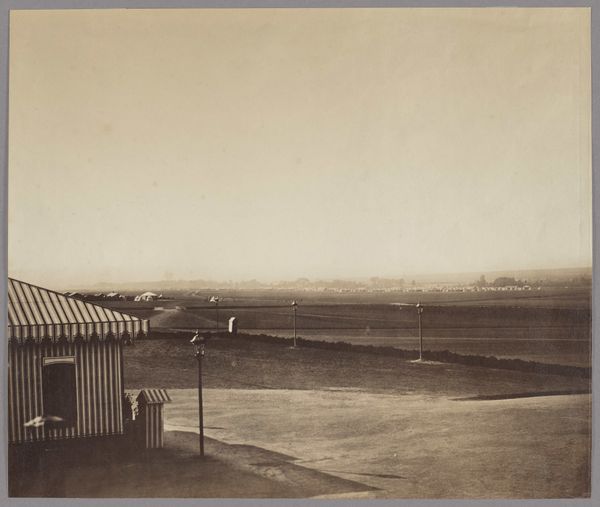
Bridge of Palichian Near Pekin, the Scene of the Fight with Imperial Chinese Troops, September 21, 1860 1860
0:00
0:00
print, photography, albumen-print
# print
#
landscape
#
photography
#
orientalism
#
albumen-print
Dimensions: image: 23.5 × 30 cm (9 1/4 × 11 13/16 in.) mount: 25 × 32.5 cm (9 13/16 × 12 13/16 in.)
Copyright: National Gallery of Art: CC0 1.0
Curator: Immediately, I’m struck by the light. It’s diffused and hazy, almost dreamlike, as though filtered through memory itself. And that bridge… isolated, stately, yet utterly still. Editor: This albumen print from 1860 by Felice Beato captures the Bridge of Palichian near Pekin, a site of conflict between Imperial Chinese troops and British forces during the Second Opium War. Beato was one of the first war photographers, and his work offers a crucial, if complex, visual record. Curator: "Complex" is the word. This is hardly a celebration of victory. There's an unsettling emptiness, isn't there? Like a stage set after the play has ended, after everyone's gone home. The lack of visible people, the muted tones… It whispers of something lost, more than something won. Editor: Absolutely. Beato wasn't simply documenting events; he was framing them. The choice of a landscape format, the meticulous composition... these elements construct a particular narrative. He highlights the architectural grandeur of the bridge, certainly, but it is inevitably entangled with the colonial gaze that sought to represent the Orient as both exotic and conquered. Curator: Exoticized… and emptied. I can almost feel the weight of expectation these images carried back home, bolstering narratives of imperial power and righteous intervention. Looking closely at the structure, what materials were used? It looks both sturdy and yet… eroded. Editor: The bridge is constructed of stone, but it has evidently suffered. Remember, the area saw fighting, so you might well be observing battle damage. Beato's technical skill is evident in the albumen process which gives a wealth of detail. These albumen prints also became a booming industry of collection that created value to places that colonials now could see. Curator: Value... indeed. And what was valued? Control, dominion. Yet Beato's artistry allows us to look past the political intent and find that undercurrent of sorrow. It leaves us questioning who the victors really were here, and what kind of victory they achieved. Editor: A somber reminder that even seemingly objective records, like photographs, are products of their time, embedded with the biases and ideologies of their creators and consumers. It's our role, now, to continue to peel back the layers and challenge those ingrained assumptions.
Comments
No comments
Be the first to comment and join the conversation on the ultimate creative platform.

